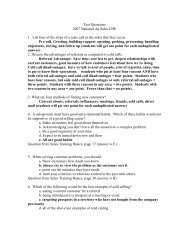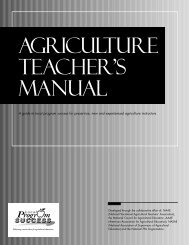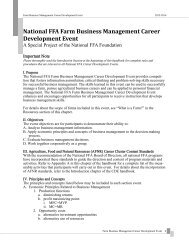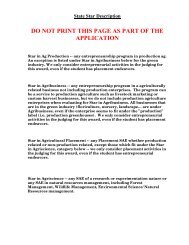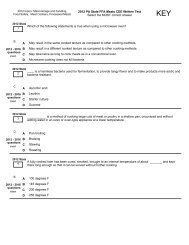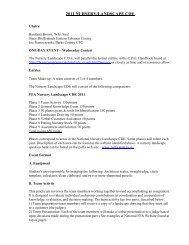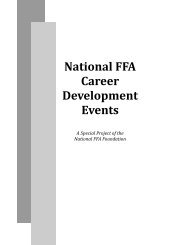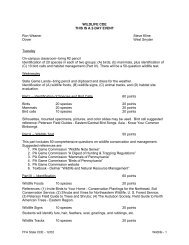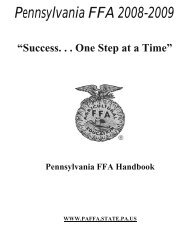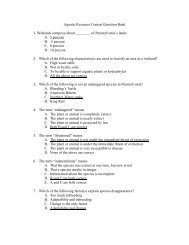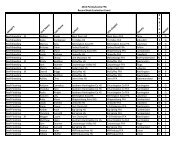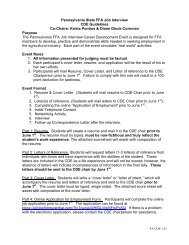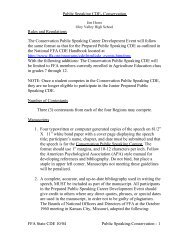AFNR Standards - National FFA Organization
AFNR Standards - National FFA Organization
AFNR Standards - National FFA Organization
Create successful ePaper yourself
Turn your PDF publications into a flip-book with our unique Google optimized e-Paper software.
1c. apply an understanding of culture and an integrated whole thatexplains the functions and interactions of language, literature,the arts, traditions, beliefs and values, and behavior patterns;1d. compare and analyze societal patterns for preserving andtransmitting culture while adapting to environmental or socialchange;1e. demonstrate the value of cultural diversity, as well as cohesion,within and across groups;1f. interpret patterns of behavior reflecting values and attitudes thatcontribute or pose obstacles to cross-cultural understanding;1g. construct reasoned judgments about specific cultural responsesto persistent human issues;1h. explain and apply ideas, theories, and modes of inquiry drawnfrom anthropology and sociology in the examination ofpersistent issues and social problems.2. Thematic Strand: Time, Continuity, and ChangeSocial studies programs should include experiences that provide for the study ofthe ways human beings view themselves in and over time, so that the learner can:2a. demonstrate that historical knowledge and the concept of timeare socially influenced constructions that lead historians to beselective in the questions they seek to answer and the evidencethey use;2b. apply key concepts such as time, chronology, causality, change,conflict, and complexity to explain, analyze, and showconnections among patterns of historical change andcontinuity;2c. identify and describe significant historical periods and patternsof change within and across cultures, such as the developmentof ancient cultures and civilizations, the rise of nation-states,and social, economic, and political revolutions;2d. systematically employ processes of critical historical inquiry toreconstruct and reinterpret the past, such as using a variety ofsources and checking their credibility, validating and weighingevidence for claims, and searching for causality;2e. investigate, interpret, and analyze multiple historical andcontemporary viewpoints within and across cultures related toimportant events, recurring dilemmas, and persistent issues,while employing empathy, skepticism, and critical judgment;2f. apply ideas, theories, and modes of historical inquiry to analyzehistorical and contemporary developments, and to inform andevaluate actions concerning public policy issues.69



